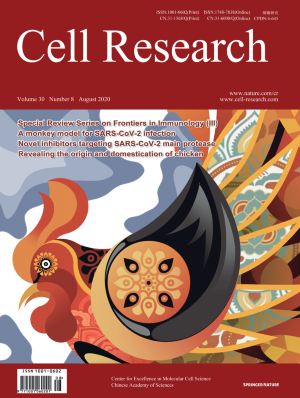
Advanced Search
Submit Manuscript
Advanced Search
Submit Manuscript
Volume 30, No 8, Aug 2020
ISSN: 1001-0602
EISSN: 1748-7838 2018
impact factor 17.848*
(Clarivate Analytics, 2019)
Volume 30 Issue 8, August 2020: 639-648 |
Old dogs, new trick: classic cancer therapies activate cGAS
Seoyun Yum1 , Minghao Li1 , Zhijian J. Chen1,2,*
1Department of Molecular Biology and Center for Inflammation Research, University of Texas Southwestern Medical Center, Dallas, TX 75390, USAThe discovery of cancer immune surveillance and immunotherapy has opened up a new era of cancer treatment. Immunotherapies modulate a patient’s immune system to specifically eliminate cancer cells; thus, it is considered a very different approach from classic cancer therapies that usually induce DNA damage to cause cell death in a cell-intrinsic manner. However, recent studies have revealed that classic cancer therapies such as radiotherapy and chemotherapy also elicit antitumor immunity, which plays an essential role in their therapeutic efficacy. The cytosolic DNA sensor cyclic GMP-AMP synthase (cGAS) and the downstream effector Stimulator of Interferon Genes (STING) have been determined to be critical for this interplay. Here, we review the antitumor roles of the cGAS-STING pathway during tumorigenesis, cancer immune surveillance, and cancer therapies. We also highlight classic cancer therapies that elicit antitumor immune responses through cGAS activation.
https://doi.org/10.1038/s41422-020-0346-1